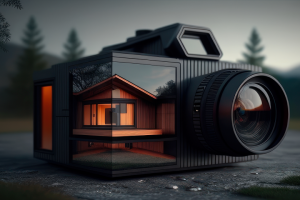Snapping up a used camera can save you a lot of money. It can also free up more budget for other pieces of photography kit, such as a tripod or a flash. Hobbyist and professional photographers don’t necessarily need the newest models, especially when there are so many second hand cameras out there.
If you’re thinking of buying your first camera or upgrading your current one, consider a second hand camera. As long as you do your homework about returns policies or make sure the camera is in good working condition before you part with your cash, there’s no reason why you can’t find a trusty model for a smaller price tag that will still go the distance.
These are our top tips for buying a used DSLR camera:
1. Read up on the reviews
In order to decide on your model of choice, or compare available offerings with each other, check out the write-ups on Digital Photography Review for example, and check out the winners of independently-run competitions, such as the Readers’ Choice Awards 2015.
Decide which features are important for you, seek out your best-matched DSLR and then use second hand outlets to track it down.
2. Play to your niche
What are you going to be using your camera for? As an all-rounder photographer, you’ll want to pick up a versatile camera and a diverse selection of lenses for various types of photography.
If you’re a sports photographer or spend a lot of time ‘in the field’, you’ll need a camera with good connectivity to send your photos from your camera to your computer. Studio photographers, you may be able to sacrifice connectivity as your computer will be right behind you.
3. Only buy from trustworthy sources
You may be able to find a second-hand camera on social selling sites like Craigslist and Gumtree, but the risk is that you can’t find out too much information about the seller.
Using eBay or Fred Miranda’s buying and selling forum, however, means you benefit from knowing a seller’s feedback score and quality. eBay also acts as a middle-man between yourself and the seller, and some sellers offer the option to return a camera.
4. Study how it looks
Wherever possible, go to see the camera in person before parting with any cash. If you can’t see the camera in person, make sure you can return it if it’s not as you expected.
Things you need to be looking out for in terms of the aesthetics of the camera are scratches and dents, rubber that’s coming off, scratches in the viewfinder and LCD screen and a clean, sturdy lens mount.
5. Check the working condition
The seller’s description of a camera for sale should provide details of the camera’s condition, and any defects, but make sure you double check when you go to see the camera, or as soon as you receive it in the post.
If the camera’s condition is less than satisfactory, you might want to negotiate the price down, decide not to purchase or—if you have already bought the camera—return it to the seller.
Here is a checklist of things you should be looking out for:
- Battery contacts and memory card slot: Inspect both of these to check if these are functioning as they should be, i.e. recognising the batteries or memory card
- Dead pixels: Take a photo in RAW with the lens cap on and view it at 100% on a computer to see whether there are dead pixels. A few are to be expected, but more than 3-4 is cause for concern.
- Shutter count: Use free online tool Camera Shutter Count to upload a photo from your camera and check the shutter count, comparing it with the expected shutter life of the model in question.
- Sensor dust: A little dust is fine, but if you are dealing with a very dusty or scratched sensor, you may need to get it cleaned by the manufacturers.
- Autofocus: put one of your lenses on the camera and take some photos to spot any autofocus issues. You can test autofocus with an autofocus calibration system.
6. Invest in good glass
While camera bodies become out of date quickly as new models are released, lenses don’t. Whether you’re buying lenses new or second hand, they’re worth spending more money on.
If you do choose to go for a second hand lens, follow the other advice in this post when picking up a used lens. First do your research about the lens you’re looking to get. When you’ve found one from a reputable seller, Check that it both looks to be in good condition and that it functions as it should.





